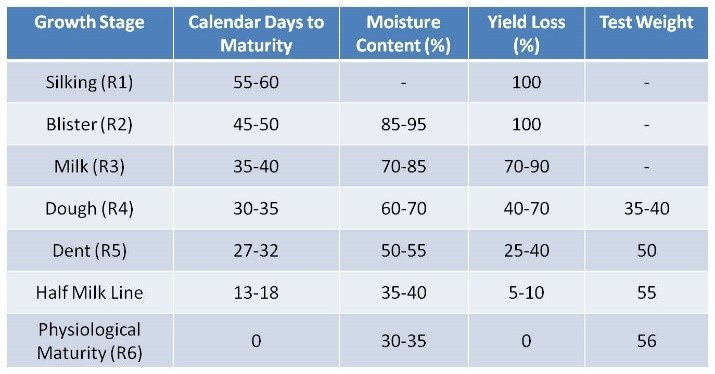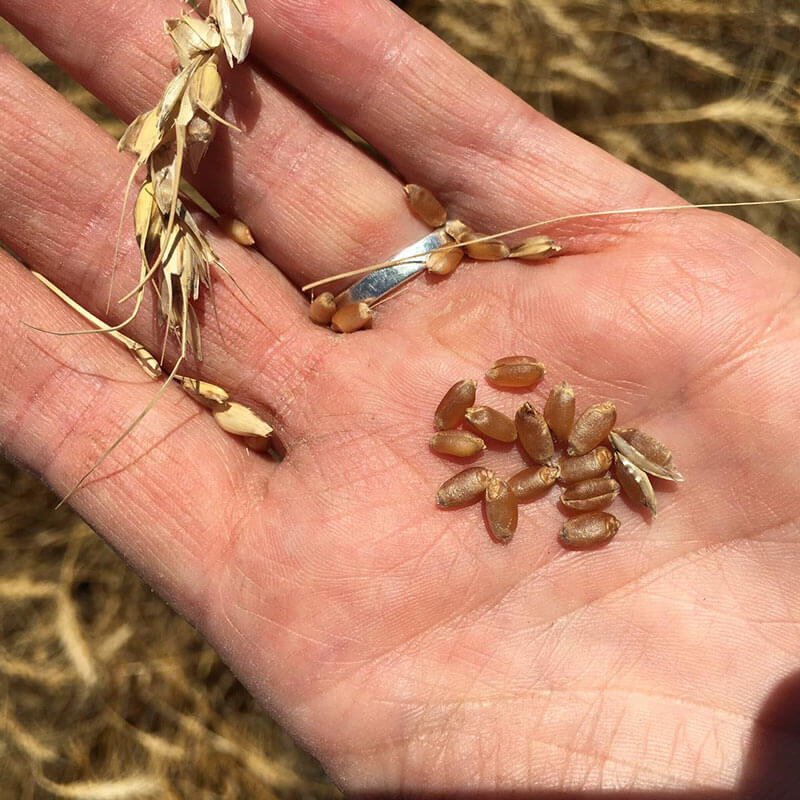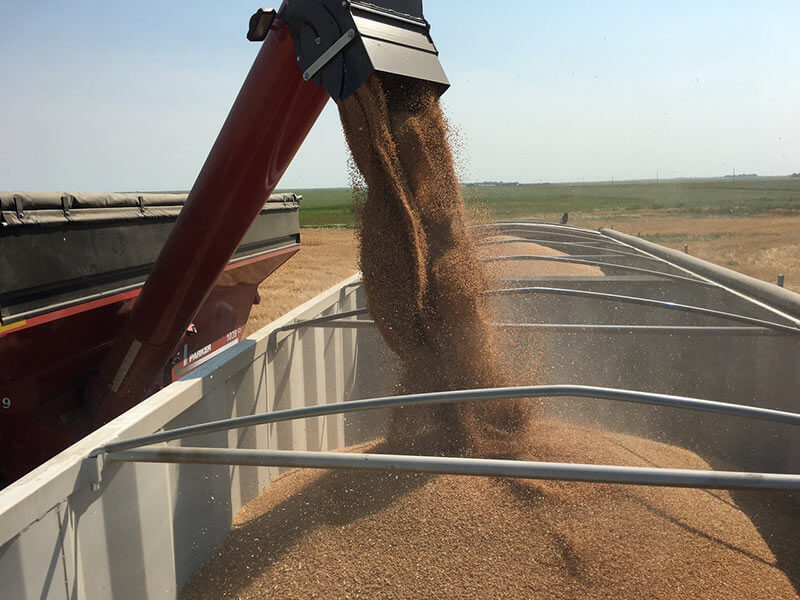Randy Kutcher, Chair in Cereal and Flax Crop Pathology, University of Saskatchewan

Randy Kutcher is the Ministry of Agriculture Strategic Research Program (SRP) Chair in Cereal and Flax Crop Pathology at the University of Saskatchewan (U of S). Kutcher completed both his BSc and MSc degrees in Agriculture at the University of Manitoba (UM). His master’s degree focused on blackleg of canola. Kutcher then moved west to complete his PhD at the University of Saskatchewan on barley diseases, followed by a post-doctoral fellowship at Agriculture and Agri-Food Canada, between Regina and Saskatoon, focusing on biological control of weeds using plant pathogens.
Where did you work before U of S?
Before joining the U of S, I worked in private industry for four years at Northern Sales Co. in Winnipeg and then after my PhD, as a Federal Government Research Scientist with Agriculture and Agri-Food Canada for approximately 15 years. I joined the Crop Development Centre (CDC) in the Department of Plant Sciences at the U of S in 2011.
What got you interested in this area of work?
I grew up in rural Manitoba (my grandparents and relatives farmed) surrounded by crops, where agriculture is top of mind. I always liked science, and having that interest, it was logical to get into agriculture.
When I went back to graduate school, I wasn’t sure I wanted to be a plant breeder, but I enjoyed working with fungi, bacteria and viruses (to a degree). I like fungi because you can see them growing in plates and you can trap the spores; they’re really neat organisms to work with. Once I started shopping around for a masters program I got along really well with Roger Rimmer (UM) and I’ve been enthusiastic ever since.
Tell us a bit about what you’re working on at the U of S.
My mandate is cereal and flax pathology, with a cereal focus on Fusarium head blight (FHB) in wheat and barley. Our priority at the CDC is to develop new varieties. In terms of FHB, my crew and I support the breeding program by managing the disease nurseries and evaluating the material in order to provide information to breeders, allowing them to make informed decisions on which lines should go forward. For any disease, relying on one strategy is probably not going to last in the long term so an integrated management plan is needed. The Manitoba Crop Alliance has contributed towards our Canadian Agricultural Partners program where we are looking at the impact of the crop sequences grown prior to wheat or barley on diseases such as FHB and the leaf spotters.
We do a lot of applied plant pathology work in terms of crop rotation, fungicide timing, and use of clean seed; in addition, we look at agronomic aspects of disease mitigation, for example, the impact of seeding date. Recently we have looked optimizing fungicide timing to improve FHB mitigation, and how that fits into an integrated pest management program. Things like trying to decide if and when fungicide will be of benefit, and determining the response to a fungicide application.
Another disease we are looking at (one which I like working on but we have not had severe problems with in the last few years, in Saskatchewan at least) is stripe rust. In 2011 we had a stripe rust epidemic in Saskatchewan. It was the first time a lot of people had seen it so there were a lot of questions about what varieties might be less susceptible and should we spray a fungicide? When should we spray? Is it too late to spray? Should we spray next year? We support the breeding program by looking for new sources of resistance for stripe rust and other management strategies. Unfortunately, because the rusts generally blow in from further south, rotation is not effective so that is why we have looked at fungicide control as another option when resistant varieties are not available.
One other disease we’re working on is bacterial leaf streak in barley. Over the last few years, we’re seeing it pop up across the prairies more and more, with some growers in Manitoba having issues with it last year.
What can you say about the value of farmers providing funding and support to your organization?
Farmer funding is critical. The Ministry of Agriculture provides a set amount of funding for the CDC, but to expand our research endeavors it is critical we have outside funding. Most of the funding for the applied plant pathology work comes from the grower groups to deal with issues on the farm. We’re very grateful for the funding and support we receive from them. We’re doing the best we can to provide the results as fast as we can to help improve farming operations.
How does that farmer funding and support directly benefit farmers?
The benefits to growers might be quickly applied, such as improved manage of diseases from fungicide timing studies (stripe rust epidemic in 2011, and FHB more recently), to delayed benefits, where we’re looking for new sources of resistance that won’t be available to growers for another ten years when the new varieties become available. Therefore, there are a wide variety of benefits that growers can use almost immediately to results that are going to take some time down the road before they see the benefits.
Breeding for genetic resistance to diseases is perhaps a little behind the scenes and longer term, but very important, while sometimes results from integrated disease management research can be given to growers within a year or two of starting the research. After three years of research, we usually have a pretty good idea how to improve management of a disease with fungicides, or possibly even the impacts of crop sequence, as opposed to fundamental knowledge, which usually takes longer to develop. It may take time to diagnose a new or uncommon disease and determine if it is due to a new pathogen or new race of an existing pathogen, or if a previously uncommon disease has become more of an issue due to changes in weather or agronomic practices. We need resources to develop an understanding of the pathogen and the disease, what conditions they need to become a problem, figure out why a disease has suddenly become a problem, and then figure out how to deal with it.
How do you spend your time outside of work?
I have too many hobbies! I really enjoy music, I recently volunteered at the Jazz Festival, and travelling – previously as a student and occasionally through my research collaborations.
What gets you excited about the work you do?
The very nature of the job. Every morning when I come in there is always something to do and it is often very different from the previous day. At the University, I get to work with young, enthusiastic students and I often get phone calls from growers to hear what issues they are facing. These are the kind of things that really make my job interesting. There are some routine aspects to science, but generally there is always something new happening.
What is the best piece of advice you’ve received?
Tenacity. Not everything is going to work out, but if you give it a good try and if you stick with it, things will work out in the end. Really, that is what research is all about, looking at the problems from different angles and talking to many people; there’s always some aspect of plant disease control you can improve to make a difference.
















